Probing the Internal Structure of Magnetized, Relativistic Jets with Numerical Simulations
Abstract
:1. Introduction
2. Transversal Equilibrium
2.1. Model Assumptions
2.2. Transversal Equilibrium
2.2.1. Jets without Rotation
2.2.2. Jets with Rotation
3. Internal Structure of Axisymmetric, Overpressured Jets
3.1. Parameters
3.2. Numerical Simulations
3.3. Overall Jet Structure
- (1)
- In all of the models, the equilibrium of the jet is established by a series of expansions and compressions of the jet flow against the ambient medium. Standing oblique shocks (recollimation shocks) associated with these jet oscillations can be distinguished in some cases, especially in hot models (PH02, see Figure 4; HP03, not shown) and, to a lesser extent, in colder, low magnetization models (KH06, KH10, not shown). The shock separation depends on the (magnetosonic) Mach number and the jet overpressure factor, whereas its strength depends on the jet’s internal energy density.
- (2)
- As a consequence of the profile of the magnetic pressure across the jet, and especially of the magnetic pinch exerted by the toroidal magnetic field, the gas pressure is not constant across the jet (see the discussion on the transversal structure of the jet models in Section 2). Models with large magnetizations (PK02, PK03, KP06, KP10) concentrate most of their internal energy in a thin hot spine around the axis (see the panels of gas pressure of models PK02 and KP10 in Figure 5 and Figure 6, respectively).
- (3)
- Despite the large difference in magnetization (a factor of 20), kinetically-dominated jet models KH10 and KP10 have very similar overall structure (jet oscillation, amplitude of variations, local jet opening angles, etc.), with the exception of the already mentioned central hot (in relative terms) spine in the KP10 jet. In these kinetically-dominated models, there is no significant internal nor magnetic energy to convert into kinetic, and the flow Lorentz factor is virtually constant in spite of the wide jet sideways oscillations (see Lorentz factor panel in Figure 6).
- (4)
- Although the jets are injected into the numerical domain with purely axial flow velocities, the development of radial components of the velocity and the magnetic field, and an axial dependence of the toroidal magnetic field—as a result of the transversal equilibrium mismatch between the injected jet and the ambient medium—produce a net toroidal force that causes the growth of non-zero azimuthal flow speeds. All of the models develop small azimuthal velocities (of the order of 2% of the speed of light or smaller). These speeds tend to be larger in models with larger maximum local opening angles (again, hot models and neighbours; compare azimuthal flow speed panels of models PH02 and KP10 in Figure 4 and Figure 6).
3.4. Effects of the Shear Layer on Poynting-Flux-Dominated Jets
3.5. Effects of Flow Rotation
4. Conclusions
Acknowledgments
Conflicts of Interest
References
- Blandford, R.D.; Payne, D.G. Hydromagnetic flows from accretion discs and the production of radio jets. Mon. Not. R. Astron. Soc. 1982, 199, 883–903. [Google Scholar] [CrossRef]
- Li, Z.-Y.; Chiueh, T.; Begelman, M.C. Electromagnetically driven relativistic jets: A class of self-similar solutions. Astrophys. J. 1992, 394, 459–471. [Google Scholar] [CrossRef]
- Blandford, R.D.; Znajek, R.L. Electromagnetic extraction of energy from Kerr black holes. Mon. Not. R. Astron. Soc. 1977, 179, 433–456. [Google Scholar] [CrossRef]
- Daly, R.A.; Marscher, A.P. The gasdynamics of compact relativistic jets. Astrophys. J. 1988, 334, 539–551. [Google Scholar] [CrossRef]
- Marscher, A.P.; Jorstad, S.G.; D’Arcangelo, F.D.; Smith, P.S.; Williams, G.G.; Larionov, V.M.; Oh, H.; Olmstead, A.R.; Aller, M.F.; Aller, H.D.; et al. The inner jet of an active galactic nucleus as revealed by a radio-to-γ-ray outburst. Nature 2008, 452, 966–969. [Google Scholar] [CrossRef] [PubMed]
- Marscher, A.P.; Jorstad, S.G.; Larionov, V.M.; Aller, M.F.; Aller, H.D.; Lähteenmäki, A.; Agudo, I.; Smith, P.S.; Gurwell, M.; Hagen-Thorn, V.A.; et al. Probing the inner jet of the quasar PKS 1510-089 with multi-waveband monitoring during strong gamma-ray activity. Astrophys. J. Lett. 2010, 710, L126–L131. [Google Scholar] [CrossRef]
- Gómez, J.L.; Lobanov, A.P.; Bruni, G.; Kovalev, Y.Y.; Marscher, A.P.; Jorstad, S.G.; Mizuno, Y.; Bach, U.; Sokolovsky, K.V.; Anderson, J.M.; et al. Probing the innermost regions of AGN jets and their magnetic fields with RadioAstron. I. Imaging BL Lacertae at 21 μ as resolution. Astrophys. J. 2016, 817, 96. [Google Scholar] [CrossRef]
- Boccardi, B.; Krichbaum, T.P.; Bach, U.; Mertens, F.; Ros, E.; Alef, W.; Zensus, J.A. The stratified two-sided jet in Cygnus A. Astron. Astrophys. 2016, 585, A33. [Google Scholar] [CrossRef]
- Mertens, F.; Lobanov, A.P.; Walker, R.C.; Hardee, P.E. Kinematics of the jet in M87 on scales of 100–1000 Schwarzschild radii. Astron. Astrophys. 2016, in press. [Google Scholar] [CrossRef]
- Lind, K.R.; Payne, D.G.; Meier, D.L.; Blandford, R.D. Numerical simulations of magnetized jets. Astrophys. J. 1989, 344, 89–103. [Google Scholar] [CrossRef]
- Komissarov, S.S. A Godunov-type scheme for relativistic magnetohydrodynamics. Mon. Not. R. Astron. Soc. 1999, 303, 343–366. [Google Scholar] [CrossRef]
- Leismann, T.; Antón, L.; Aloy, M.A.; Müller, E.; Martí, J.M.; Miralles, J.A.; Ibáñez, J.M. Relativistic MHD simulations of extragalactic jets. Astron. Astrophys. 2005, 436, 503–526. [Google Scholar] [CrossRef]
- Lyubarsky, Y.E. Kink instability of relativistic force-free jets. Mon. Not. R. Astron. Soc. 1999, 308, 1006–1010. [Google Scholar] [CrossRef]
- Mizuno, Y.; Lyubarsky, Y.; Nishikawa, K.-I.; Hardee, P.E. Three-dimensional relativistic magnetohydrodynamic simulations of current-driven instability. I. Instability of a static column. Astrophys. J. 2009, 700, 684–693. [Google Scholar] [CrossRef]
- Mizuno, Y.; Lyubarsky, Y.; Nishikawa, K.-I.; Hardee, P.E. Three-dimensional relativistic magnetohydrodynamic simulations of current-driven instability. III. Rotating relativistic jets. Astrophys. J. 2012, 757, 16. [Google Scholar] [CrossRef]
- Martí, J.M. The structure of steady, relativistic, magnetized jets with rotation. Mon. Not. R. Astron. Soc. 2015, 452, 3106–3123. [Google Scholar] [CrossRef]
- Martí, J.M.; Perucho, M.; Gómez, J.L. The internal structure of overpressured, magnetized, relativistic jets. Astrophys. J. 2016, in press. [Google Scholar]
- Hardee, P.E. The stability of astrophysical jets. In Jets at All Scales (IAU S275) (Proceedings of the International Astronomical Union Symposia and Colloquia); Romero, G.E., Sunyaev, R.A., Belloni, T., Eds.; Cambridge University Press: Cambridge, UK, 2011; p. 41. [Google Scholar]
- Hardee, P.E.; Rosen, A. Dynamics and structure of three-dimensional trans-Alfvénic jets. II. The effect of density and winds. Astrophys. J. 2002, 576, 204–221. [Google Scholar] [CrossRef]
- Mizuno, Y.; Hardee, P.E.; Nishikawa, K.-I. Three-dimensional relativistic magnetohydrodynamic simulations of magnetized spine-sheath relativistic jets. Astrophys. J. Lett. 2007, 662, 835–850. [Google Scholar] [CrossRef]
- Kim, J.; Balsara, D.S.; Lyutikov, M.; Komissarov, S.S.; George, D.; Siddireddy, P.K. On the linear stability of magnetized jets without current sheets—Non-relativistic case. Mon. Not. R. Astron. Soc. 2015, 450, 982–997. [Google Scholar] [CrossRef]
- Kim, J.; Balsara, D.S.; Lyutikov, M.; Komissarov, S.S. On the linear stability of sheared and magnetized jets without current sheets—Non-relativistic case. Mon. Not. R. Astron. Soc. 2016, 461, 728–741. [Google Scholar] [CrossRef]
- Perucho, M.; Martí, J.M.; Hanasz, M. Nonlinear stability of relativistic sheared planar jets. Astron. Astrophys. 2005, 443, 863–881. [Google Scholar] [CrossRef]
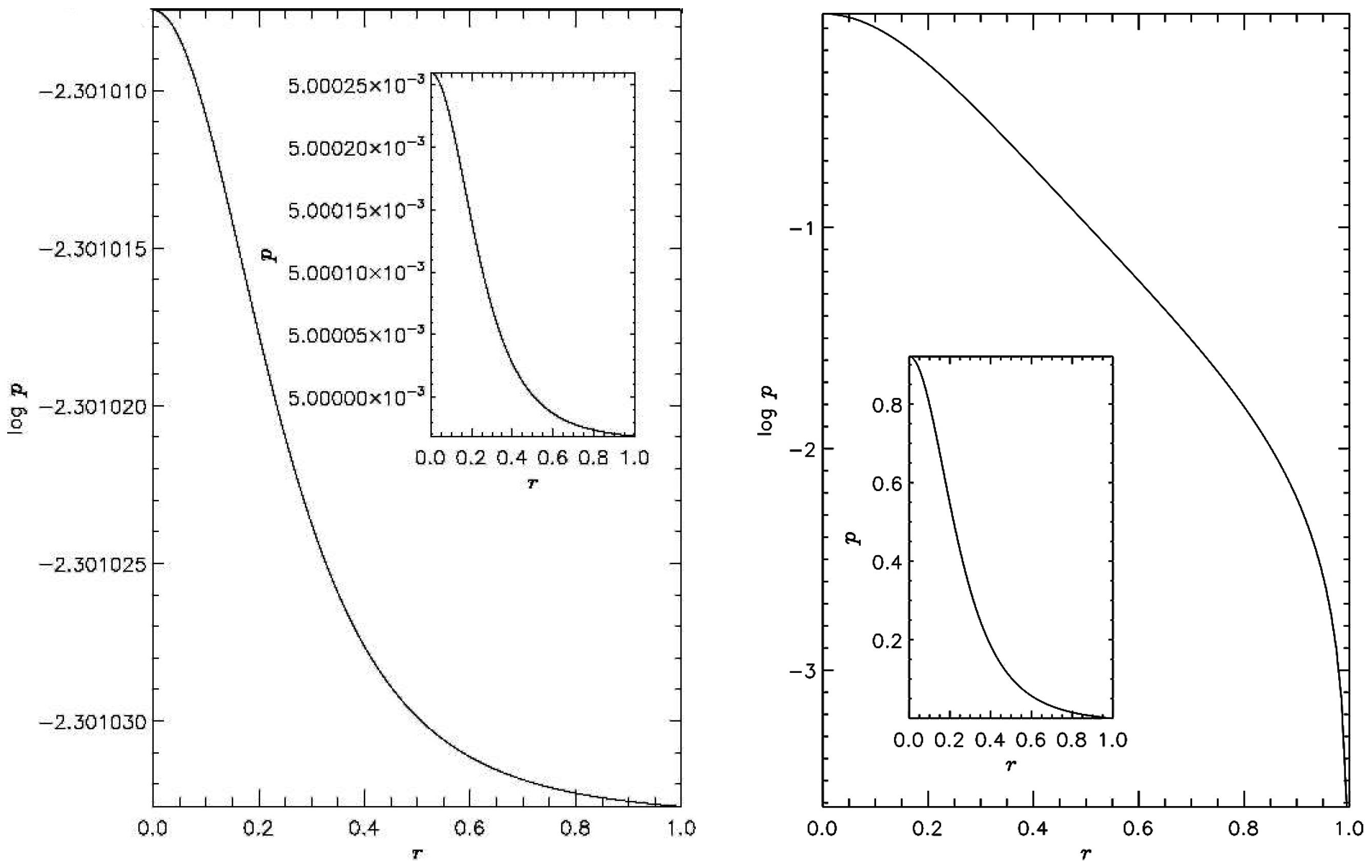
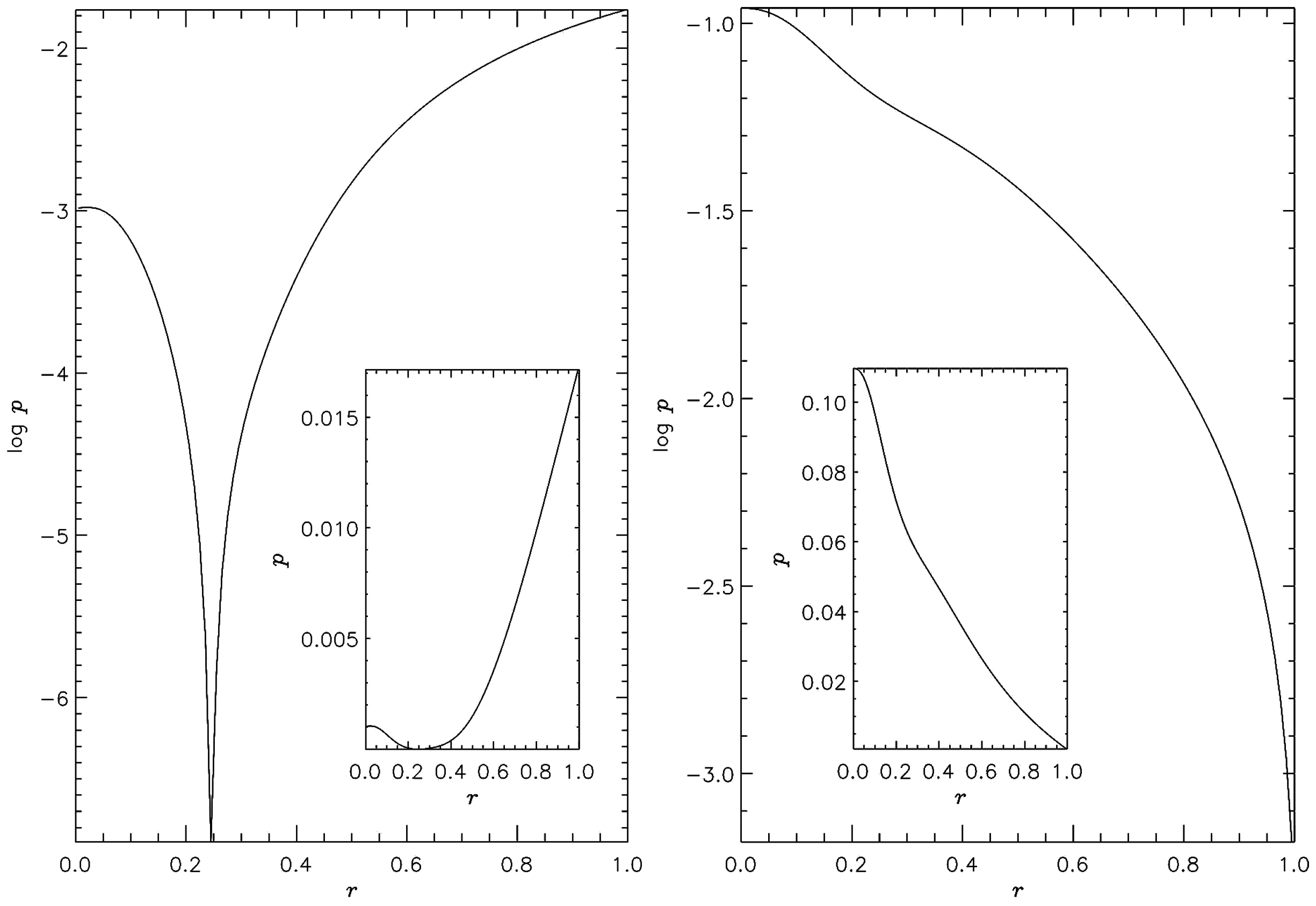
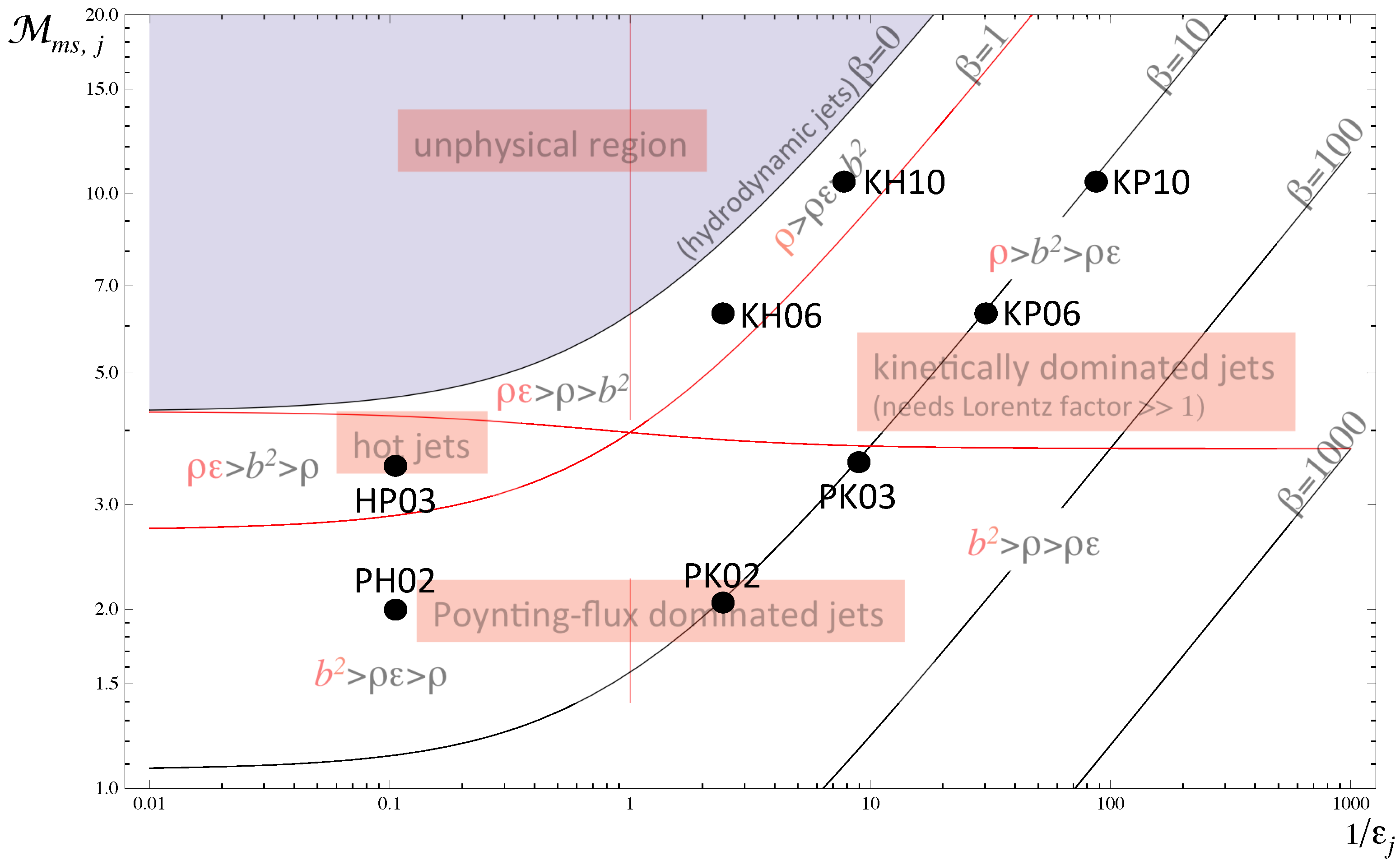
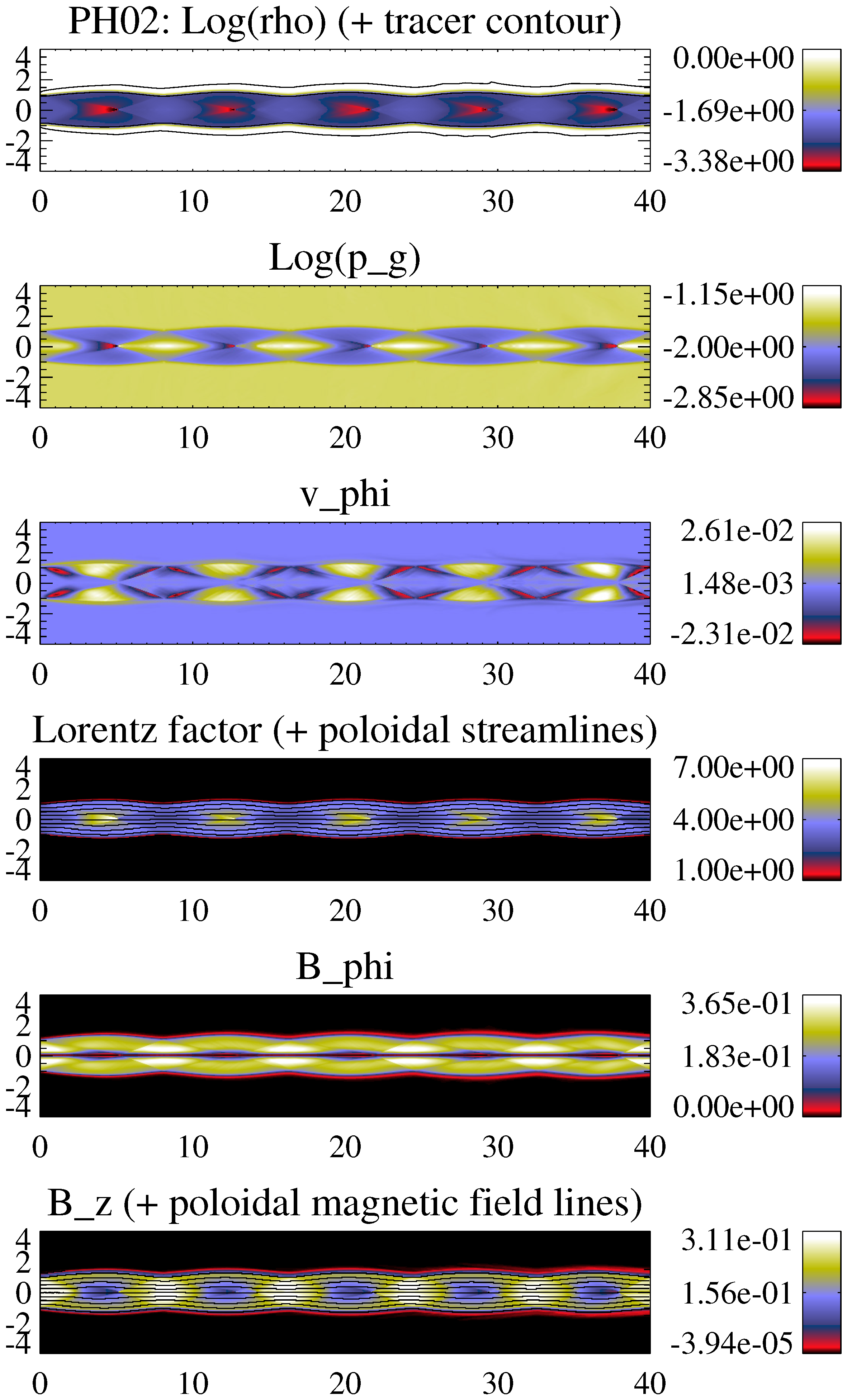

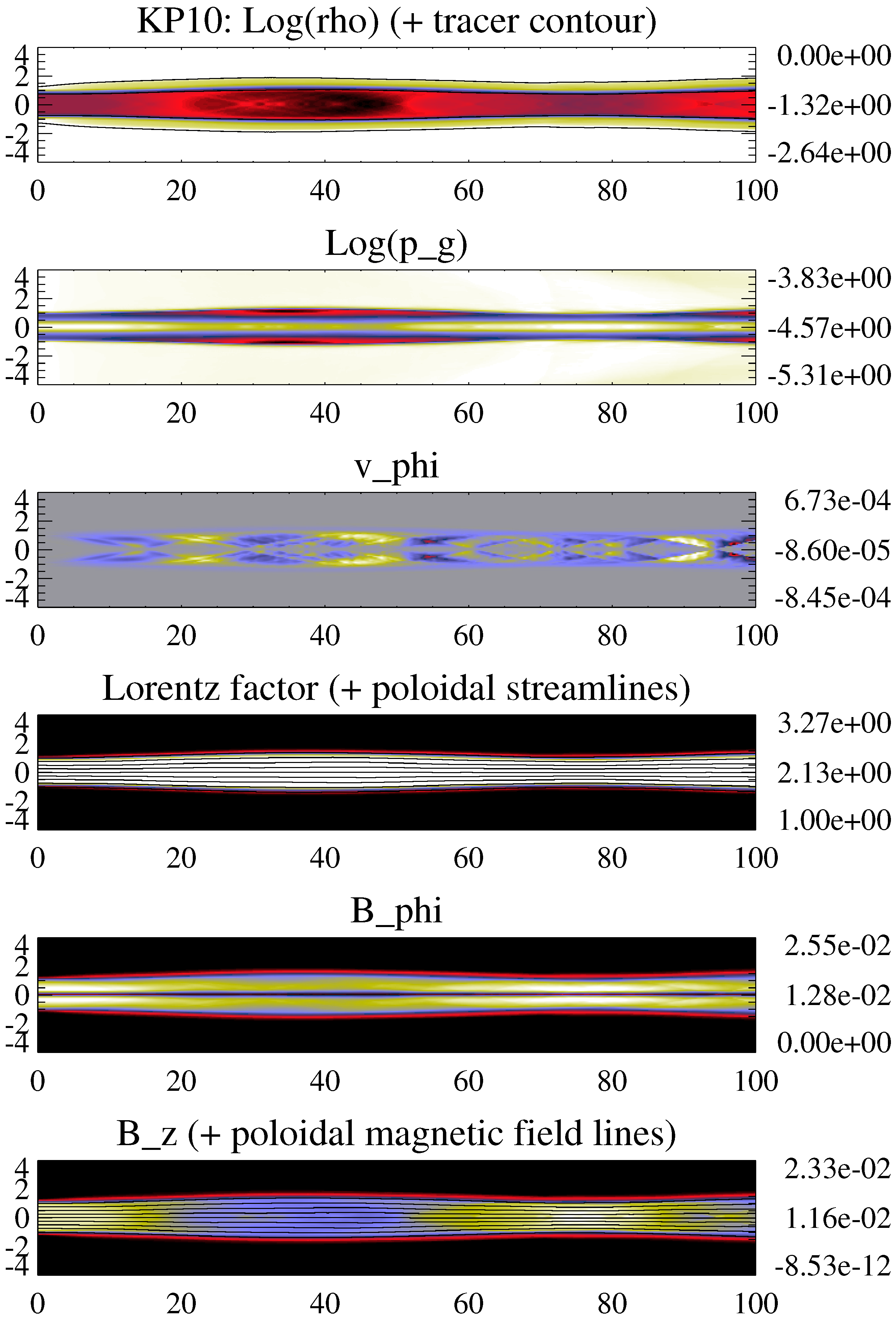
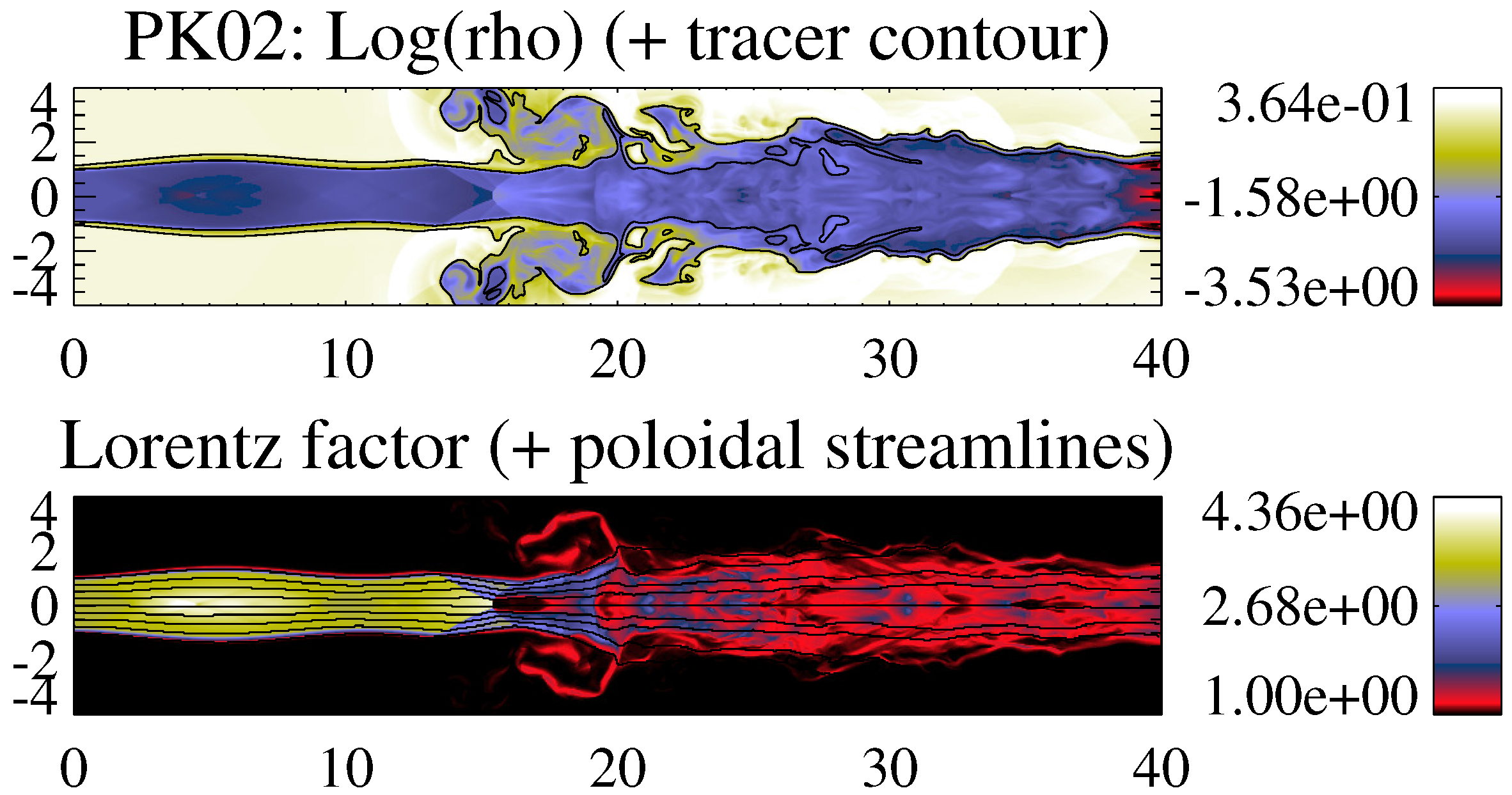
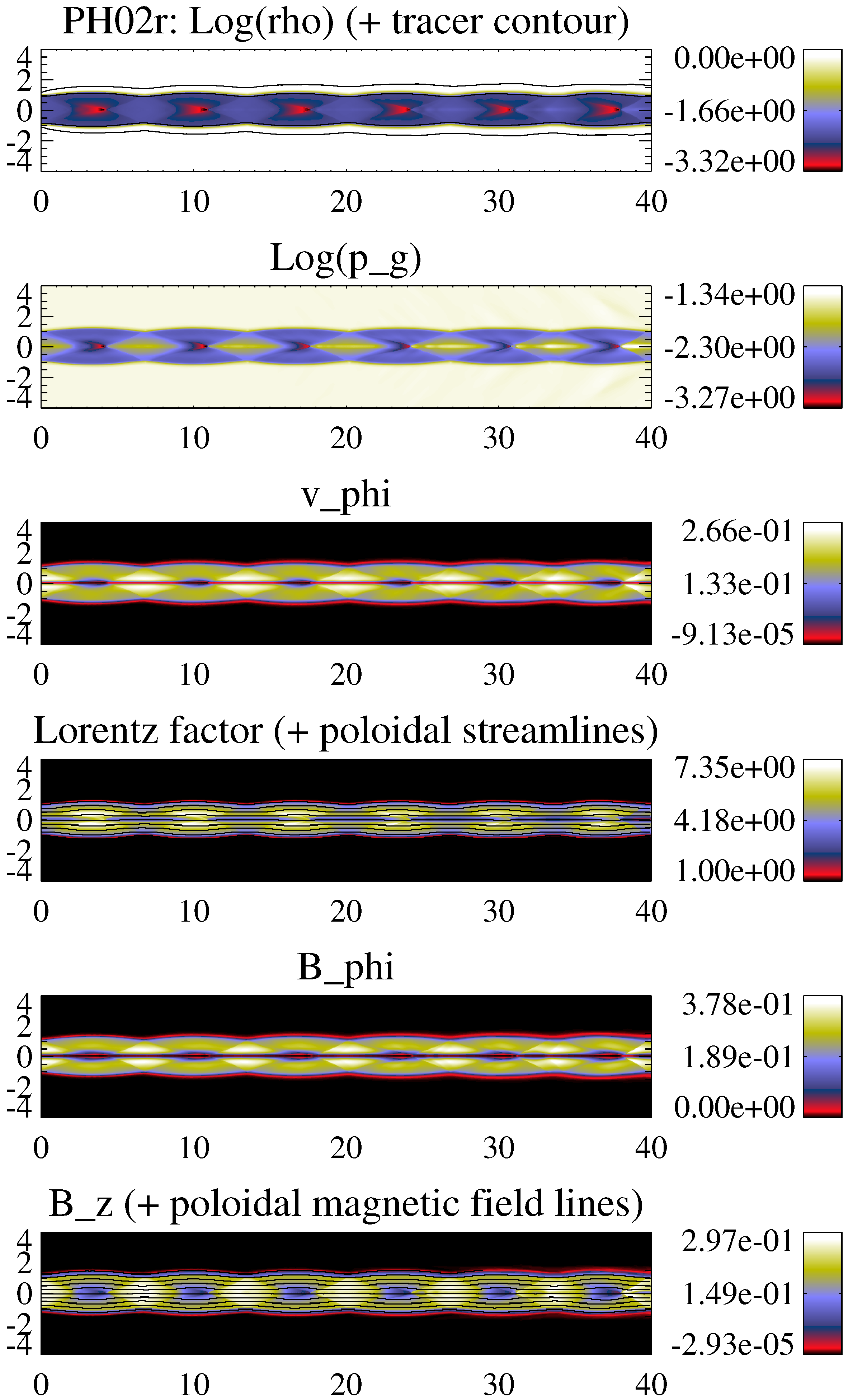
| Model | K | [] | ||||||||
|---|---|---|---|---|---|---|---|---|---|---|
| PH02 | 2 | 0.12 | ||||||||
| PK02 | 2 | 0.49 | ||||||||
| HP03 | 2 | 0.12 | ||||||||
| PK03 | 2 | 0.49 | ||||||||
| KH06 | 2 | 0.49 | ||||||||
| KP06 | 2 | 0.32 | 0.0317 | |||||||
| KH10 | 2 | 0.24 | ||||||||
| KP10 | 2 | 0.24 | 0.0132 |
© 2016 by the author; licensee MDPI, Basel, Switzerland. This article is an open access article distributed under the terms and conditions of the Creative Commons Attribution (CC-BY) license (http://creativecommons.org/licenses/by/4.0/).
Share and Cite
Martí, J.-M. Probing the Internal Structure of Magnetized, Relativistic Jets with Numerical Simulations. Galaxies 2016, 4, 51. https://doi.org/10.3390/galaxies4040051
Martí J-M. Probing the Internal Structure of Magnetized, Relativistic Jets with Numerical Simulations. Galaxies. 2016; 4(4):51. https://doi.org/10.3390/galaxies4040051
Chicago/Turabian StyleMartí, José-María. 2016. "Probing the Internal Structure of Magnetized, Relativistic Jets with Numerical Simulations" Galaxies 4, no. 4: 51. https://doi.org/10.3390/galaxies4040051





